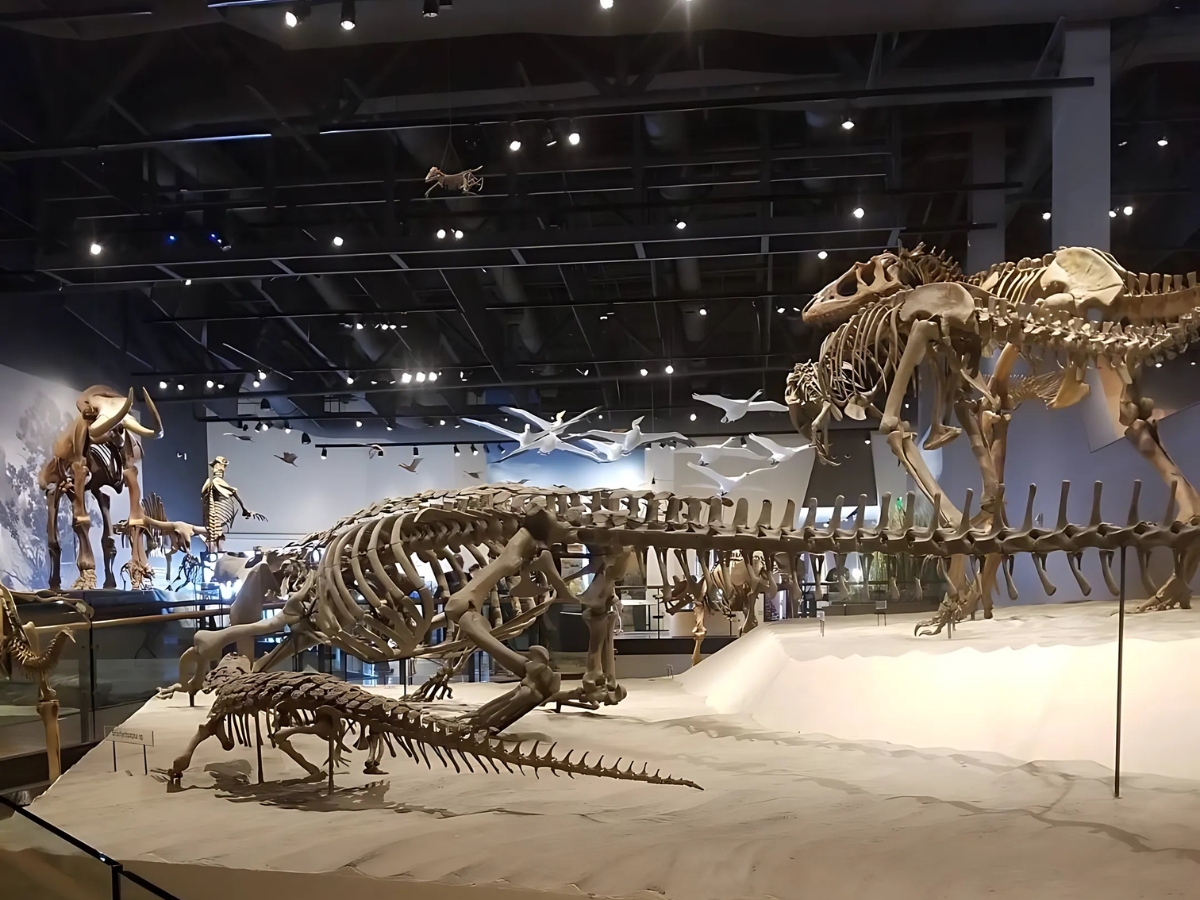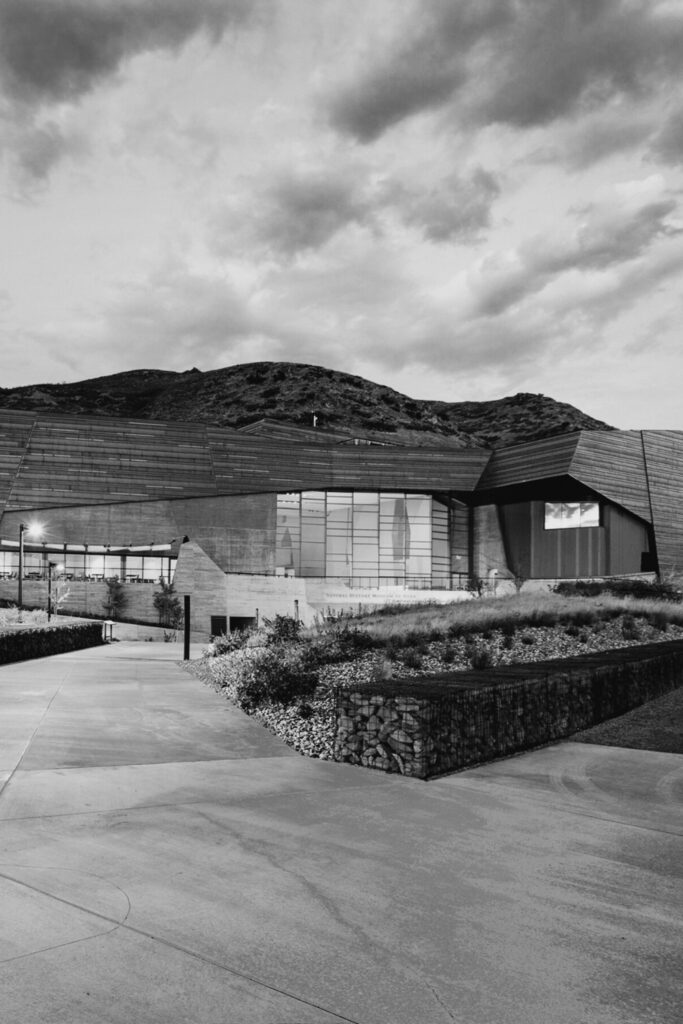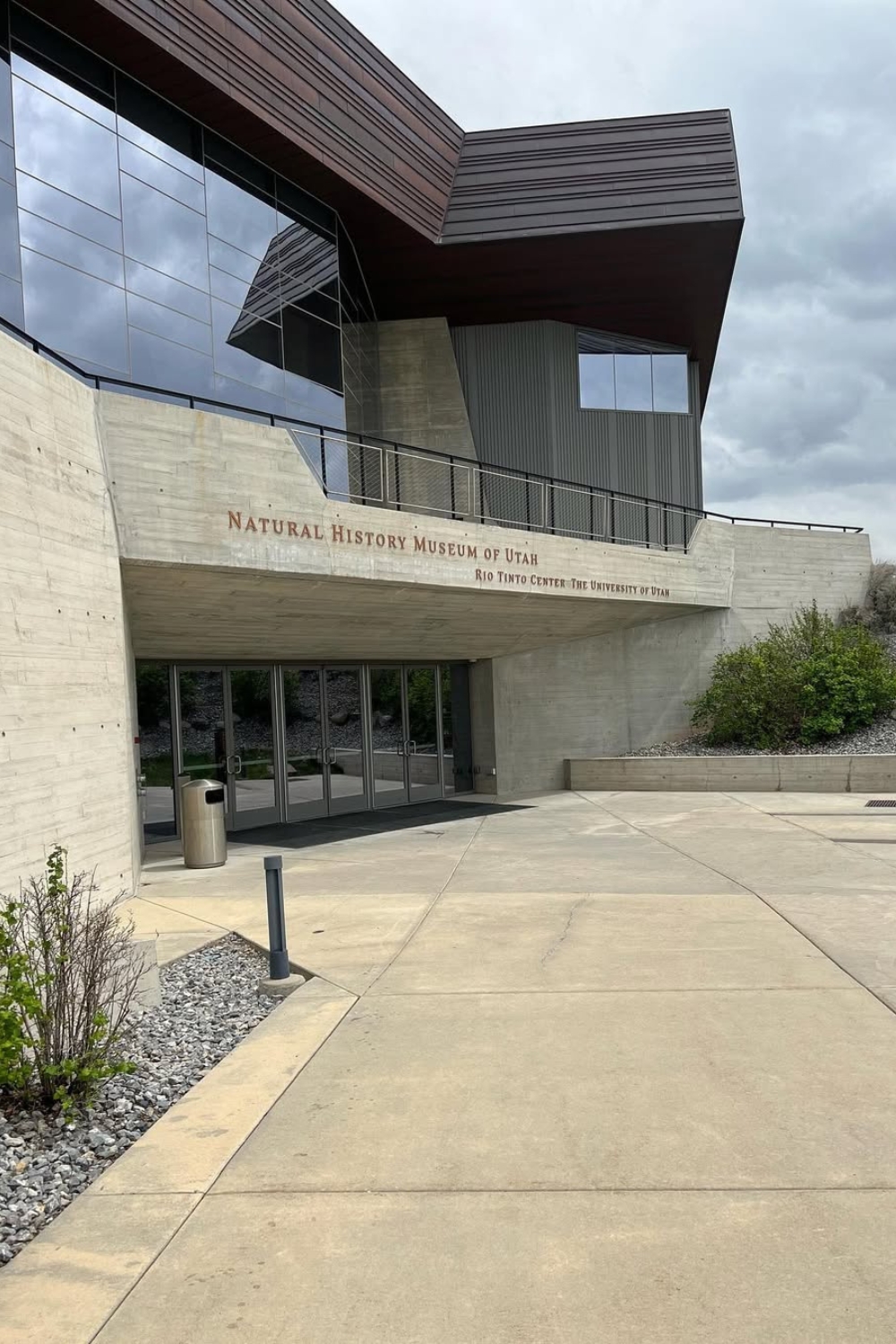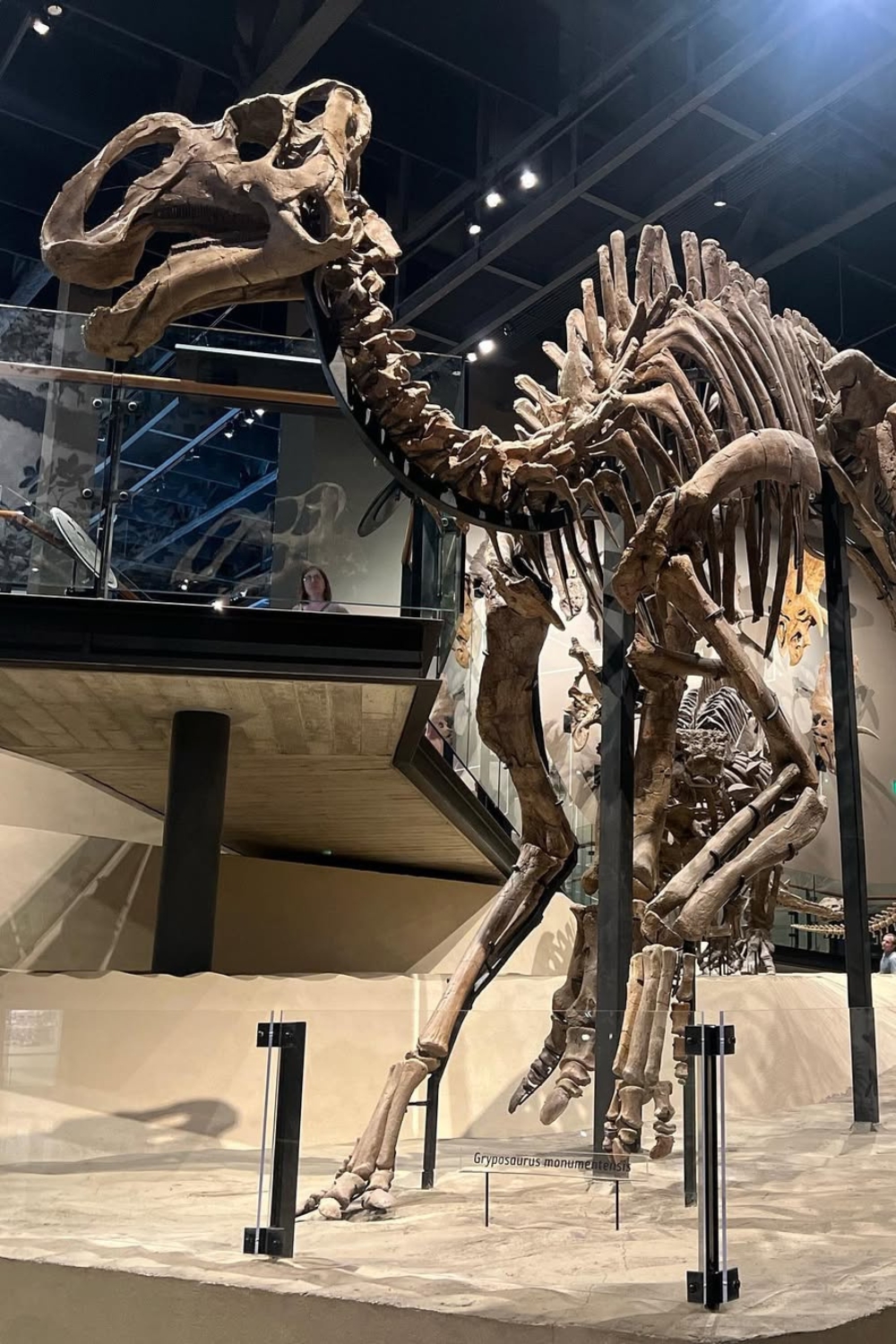The Natural History Museum of Utah (NHMU) is a center of knowledge and exploration. For travelers interested in the natural world, this museum is a top destination. It features impressive exhibits, interactive displays, and a wealth of information about Earth’s history. The NHMU provides an exciting experience for all visitors, including families, science lovers, and anyone curious about the planet’s wonders.

image by @utahwithkids from Instagram
Natural History Museum of Utah History
The Natural History Museum of Utah (NHMU) has a long history focused on preserving, exploring, and teaching about the natural world. It began in 1963 as a small museum on the University of Utah campus, originally called the Museum of Natural History. The museum was part of the university’s Department of Anthropology and had a modest collection, mainly consisting of local fossils, minerals, and ethnographic objects.
Over time, the museum’s collection grew significantly. In 1999, it moved to a larger building to accommodate the expanding collection and rising number of visitors. This new space was essential for supporting the museum’s educational goals and research efforts. The move represented a key moment in the museum’s growth, transforming it from a small academic collection into a world-class institution.

In 2011, the Natural History Museum of Utah (NHMU) relocated to its current spot at the base of the Wasatch Mountains in Salt Lake City. The new building, designed by Ennead Architects, combines modern architecture with Utah’s natural surroundings. The museum’s expanded galleries feature exhibits on paleontology, geology, anthropology, and more, making it one of the top natural history museums in the U.S. Today, the NHMU continues to lead in scientific research and public education, offering engaging exhibits and hands-on learning for visitors of all ages.
How to Reach Natural History Museum of Utah
The Natural History Museum of Utah, located at 301 Wakara Way in Salt Lake City, Utah, is a premier destination for those interested in exploring the natural world. Situated on the University of Utah campus, the museum is easily accessible by various modes of transportation. Here’s how you can reach the museum:
1. By Car
The museum is conveniently located for visitors driving from different parts of Salt Lake City and beyond.
- From the North:
- Take I-15 South.
- Exit 307 for 400 South and turn left onto 400 South.
- Continue toward the University of Utah campus as 400 South turns into 500 South and then to Foothill Drive (UT-186).
- Turn left at Wakara Way; the museum will be visible at the top of the road.
- Continue up Wakara Way to the museum.
- From the South:
- Take I-15 North.
- Exit 304 to merge onto I-80 East toward Cheyenne.
- Exit 129 for Foothill Drive (UT-186) toward Parleys Way.
- Continue straight onto Foothill Drive.
- Past Sunnyside Drive, turn right onto Wakara Way; the museum will be visible at the top of the road.
- Continue up Wakara Way to the museum.
- From the East:
- Take I-80 West.
- Exit 129 for UT-186 West.
- Continue straight onto S Foothill Drive.
- Past Sunnyside Drive, turn right onto Wakara Way; the museum will be visible at the top of the road.
- Continue up Wakara Way to the museum.
- From the West:
- Take I-80 East.
- Take exit 121 for 600 South.
- Turn left onto S State Street.
- Turn right onto 400 South/UT-186 E/E University Boulevard.
- Continue to follow UT-186 E until Foothill Drive.
- Turn left onto Wakara Way; the museum will be visible at the top of the road.
- Continue up Wakara Way to the museum.
The museum provides two levels of surface parking next to the building. Visitors need to walk uphill to reach the main entrance, with footpaths, stairways, and ramps available for those with strollers or wheelchairs. Along the footpaths, there are markers showing important geological time periods that span 150 million years.
2. By Public Transportation
For those relying on public transit, several options are available:
UTA Bus Routes:
Four UTA Bus routes stop at the intersection of Chipeta and Wakara Way, which is two blocks west of the museum.
- Route 228: Travels from downtown Salt Lake to Research Park to the 45th South TRAX Stop (Monday to Friday service only).
- Route 313: An Express route to/from the south Salt Lake Valley (Monday to Friday service only).
- Route 455: Travels from the University of Utah to Ogden (Monday to Friday service only).
- Route 473: An Express route to/from Ogden (Monday to Friday service only).
Please note that there is an uphill walk from Chipeta and Wakara Way to the museum. Be prepared for the walk or wait for the University of Utah Black Shuttle for service to the museum’s main entrance. Currently, there is no UTA bus service to the museum on Saturdays and Sundays. For holiday service, please visit the UTA website.
University of Utah Hospital On-Demand Shuttle:
The Hospital On-Demand Shuttle automatically meets the Red Line TRAX at the Medical Center TRAX Station from 6 a.m. to 9 p.m. and will provide service upon request to the Natural History Museum of Utah.
To request a pick-up, call 801 581 4189 (or 801 231 9058 after 6 p.m.) or do so online by visiting uofubus.com. After your request is made, a shuttle will pick you up within 15 minutes.
3. By Light Rail
The nearest light rail station to the museum is Fort Douglas Station, approximately an 11-minute walk away. The 703 light rail line stops nearby at 5:22 AM and the last stop is at 11:33 PM.
4. By Bicycle
For cycling enthusiasts, the museum is accessible via bike trails that pass in front of the building. The museum provides bike racks for visitors.
5. By Taxi or Ride-Sharing Services (Uber, Lyft)
Another convenient option is taking a taxi or ride-sharing service to the museum. This is a great choice if you want to avoid parking hassles or public transportation. Depending on your starting location, ride-sharing fares can vary, but typically, they are affordable for short distances. Simply input the museum’s address (301 Wakara Way) into your preferred ride-sharing app and head straight to the museum.
Natural History Museum of Utah Tickets Price and Timings
Operating Hours
- Monday to Saturday: 10:00 AM to 5:00 PM
- Wednesday: 10:00 AM to 9:00 PM
- Sunday: 10:00 AM to 5:00 PM
Please note that the museum is closed on Thanksgiving Day and Christmas Day.
Tickets Price
- Adults (ages 25 and above): $22.95
- Seniors (ages 65 and above): $20.95
- Young Adults (ages 13 to 24): $20.95
- Children (ages 3 to 12): $17.95
- Children (ages 2 and under): Free
- University of Utah Students, Faculty, and Staff (with valid ID): Free
- Museum Members: Free
For the most current information on admission fees and any available discounts, please refer to the museum’s official website.
Ticket Reservations
The museum offers walk-up tickets, but booking online in advance is recommended for faster entry. This also lets you choose a preferred time. Discounts can only be applied at the admission desk.
Additional Information
- Museum Membership: Becoming a museum member offers free admission for a year, along with other benefits. Members can also request tickets ahead of time to skip the line.
- Group Visits: Discounts are available for groups of 12 or more. For more information on group visits and reservations, please visit the museum’s official website.
Exhibits at the Natural History Museum of Utah


image by @echowigs from Instagram
The Natural History Museum of Utah features exhibits on many fascinating topics, designed to educate and engage visitors. Its collection showcases millions of years of Earth’s history, focusing on Utah’s unique geology and wildlife.
1. The Paleozoic Era
The museum’s Paleozoic exhibit provides a look at life millions of years ago, highlighting how early creatures developed and adapted over time. Visitors can see fossils of ancient marine animals and some of the first land creatures. The displays include clear explanations of how these organisms lived, survived, and changed during this important period in Earth’s history.
2. Dinosaurs and Prehistoric Life
The dinosaur section is one of the most popular areas in the museum. The NHMU has an impressive collection of dinosaur fossils. Visitors can see large dinosaur skeletons, including Allosaurus, Stegosaurus, and Utahraptor. Many of these fossils were found in Utah. This section helps visitors learn about prehistoric life through interactive displays, videos, and detailed models.
3. The Ice Age
The Ice Age exhibit takes visitors back to a time when large parts of the Earth were covered in ice. This section displays fossils of ancient mammoths, saber-toothed cats, and other animals that lived during this cold period. It offers an interesting view of how these creatures survived in tough conditions and why they eventually disappeared.
4. The Geology of Utah
Utah has many different landscapes, and the museum’s geology exhibit showcases the state’s unique land features. The display explains how the Rocky Mountains formed and how natural forces shaped the well-known red rock landscapes in the Utah desert. It describes the role of earthquakes, volcanoes, and erosion in creating the beautiful scenery visitors see today.
5. Human History
The museum also showcases the history of human life, highlighting Native American cultures in Utah and the influence of European settlers in the area. Exhibits include artifacts, tools, and displays that explain how societies developed and their connection with the land.
Special Exhibitions and Events
The Natural History Museum of Utah (NHMU) hosts a variety of annual events that captivate visitors year after year. These recurring events offer unique experiences that blend education with entertainment, making them highlights of the museum’s calendar.
1. DinoFest
Every January, NHMU hosts DinoFest, a weekend event all about dinosaurs. Visitors can enjoy expert talks by famous paleontologists, get a close look at the museum’s fossil collections and lab, and take part in fun activities for all ages. Each year highlights a special theme, such as “Underwater Worlds” in 2025, which will showcase ancient sea creatures that lived alongside dinosaurs.
2. Family Seasonal Science Programs
Throughout the year, NHMU offers Family Seasonal Science programs, designed to engage families in holiday-themed science activities. These events include:
- Valentine’s Day: Crafting and science experiments centered around themes of love and friendship.
- Emerald Equinox: Celebrations in March featuring green-themed science experiments and spring crafts.
- Eco Arbor Day: In April, activities focus on environmental stewardship and tree-themed crafts.
- Parents’ Day: In May, events honor the roles of mothers and fathers with special crafts and activities.
These programs provide hands-on learning experiences that align with seasonal themes, making science accessible and fun for the whole family.
3. World Whale Day Celebration
In February, coinciding with special exhibitions like “Orcas: Our Shared Future,” NHMU hosts the World Whale Day Celebration. This event includes crafts, games, storytelling, and educational activities that highlight the significance of whales in our ecosystem.
